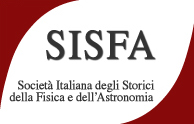Speaker
Description
In 1618 Galileo and his student Mario Guiducci argued that comets were hot and dry exhalations illuminated by the Sun and carried forward by the revolution of the heavens. They endorsed the account according to which cometary phaenomena were nothing more than mere appearances or, as he put it, "wandering glimmers" of reflected light. –How could they ever come to elaborate such a peculiar account? The thesis, also known as "optical theory" of comets (as defined by Peter Barker), has been considered in that context either as straightforwardly Aristotelian or implicitly anti-Aristotelian, or even Stoic in its essence. In my contribution I rather argue that Galileo actually grounded his work on a long tradition of Aristotelian studies on the subject, as well as on a good amount of the Sixteenth century cometary and meteorological literature, which he partially followed and developed in his own account since the time of his studies in the new star of 1604, but only in so far as that tradition was functional to overturn the Aristotelian physics on a deeper and more undermining level. In my diachronic analysis, the pseudonymous treatise Considerazioni d’Alimberto Mauri, recently attributed to the pen of Galileo Galilei, will be also taken into account. The mature view on the "optical theory" of cometary transients presented by Galileo’s Saggiatore will be thus understood on the ground of a new set of sources, and on the background of a higher number of preparatory steps, for a fuller understanding of the scientific strategies underneath.

